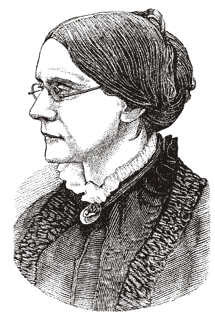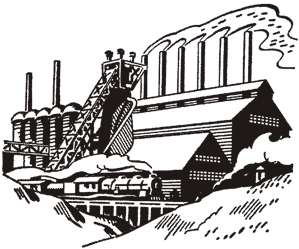|
Review Quiz for
Unit 5 - The Progressive Movement
Frameworks for America's Past Directions:
Take this short quiz on your own or with your class.
Click on the link at the bottom of the page to check your answers! 1. The Progressive Movement is the name for a wide variety of efforts by many Americans who wanted to a. add new
states and territories to the United States.
b. pass new laws and make reforms to improve American life. c. build new railroads across America. d. make scientific advances for creating new technology.  2. Susan B. Anthony, Elizabeth Cady
Stanton, Alice Paul, and Lucy Burns were all most involved with the
effort to: 2. Susan B. Anthony, Elizabeth Cady
Stanton, Alice Paul, and Lucy Burns were all most involved with the
effort to:a. expand
railroads and highways in the U.S.
b. improve tenement housing in cities. c. guarantee women the right to vote. d. stop corruption in big city politics. 3. People involved in the temperance movement were mainly interested in a. helping mine
workers.
b. better conditions in the meat packing industry. c. stopping or reducing the consumption of alcohol. d. ending racial segregation. 4. The women’s suffrage movement was aimed at a. making divorce
easier.
b. guaranteeing women the right to vote. c. protecting women from suffering in dangerous jobs. d. stopping or reducing the sale of alcohol.  5. Labor unions like the American
Federation of Labor wanted all
of these EXCEPT: 5. Labor unions like the American
Federation of Labor wanted all
of these EXCEPT:a. more work
hours.
b. safer work conditions c. an end to child labor d. higher pay for workers. 6. When members of a labor union all refuse to work, in order to try to win higher pay from a company, it is called a a. strike.
b. lockout. c. breaker. d. scab. 7. The Homestead Strike in 1892 was at a steel mill owned by Andrew Carnegie near the city of  a. Detroit a. Detroitb. Pittsburgh c. Chicago d. St. Louis 8. What was the outcome of the Homestead Strike? a. Workers were
given higher wages.
b. The steel mill went bankrupt, and workers all lost their jobs. c. The strike failed, and most steel workers quit the union. d. Women were allowed to work at the mill. 9. What is a monopoly? a. A business
that controls the supply of a
product or service.
b. An elected official who keeps winning elections over and over again. c. A tall building with a steel framework inside to support it. d. A type of railroad that uses only a single overhead track. 10. The Triangle Shirtwaist Company fire in New York City in 1911 was shocking to Americans because a. over 140
people died, mostly young women.
b. some of the exits from the factory floor were locked shut. c. some victims jumped to their deaths to escape the flames. d. all of the above. 11. Which Amendment guaranteed women’s voting rights nationwide in 1920? a. 14th
b. 15th c. 18th d. 19th 12. The Eighteenth Amendment, which also took effect in 1920, is important because it a. gave women the
right to vote.
b. made the making or sale of alcohol illegal. c. created an income tax on the rich. d. made elections more honest.
Copyright 2010, 2019 by David Burns All Rights Reserved www.fasttrackteaching.com/ffap |
|
Copyright Notice
Copyright 2019 by David Burns. All rights reserved. As a guide to the Virginia Standards of Learning, some pages necessarily include phrases or sentences from that document, which is available online from the Virginia Department of Education. The author's copyright extends to the original text and graphics, unique design and layout, and related material. |